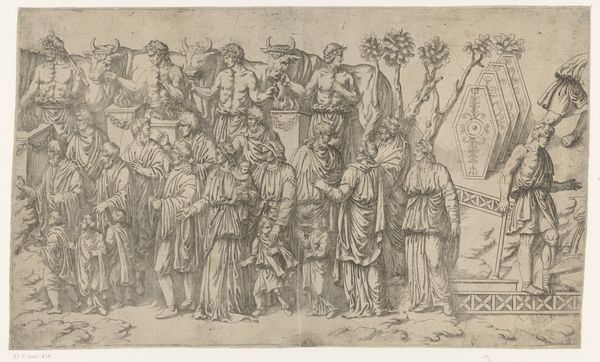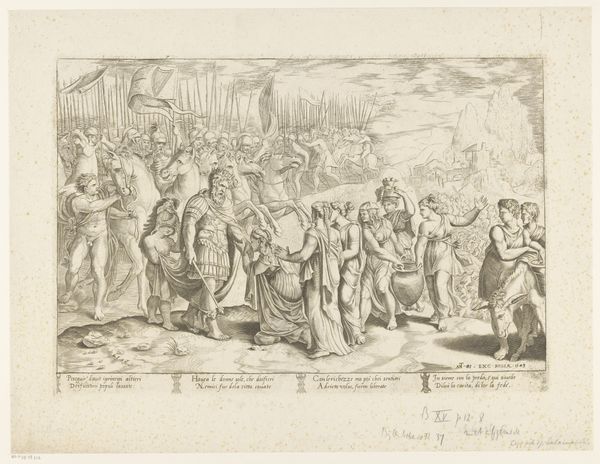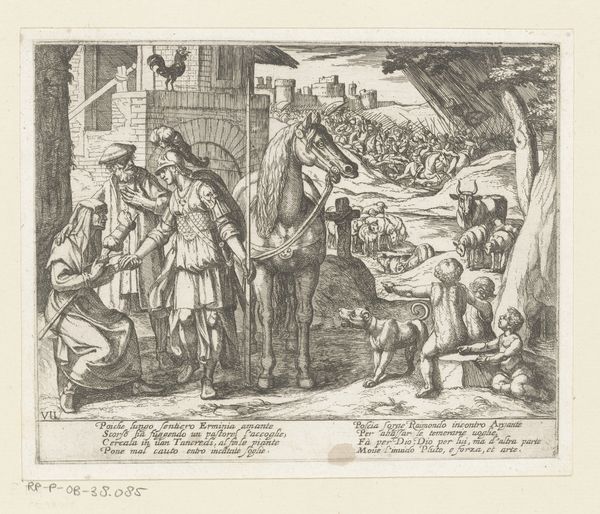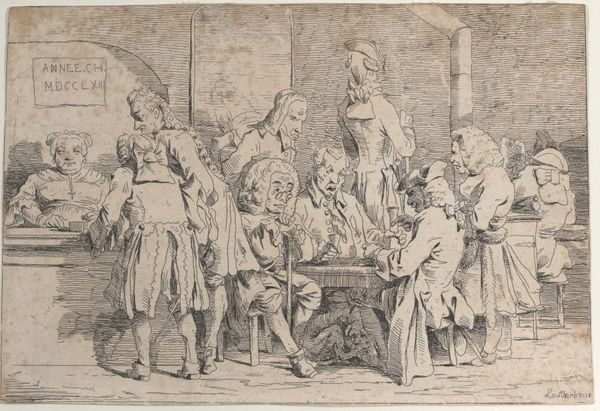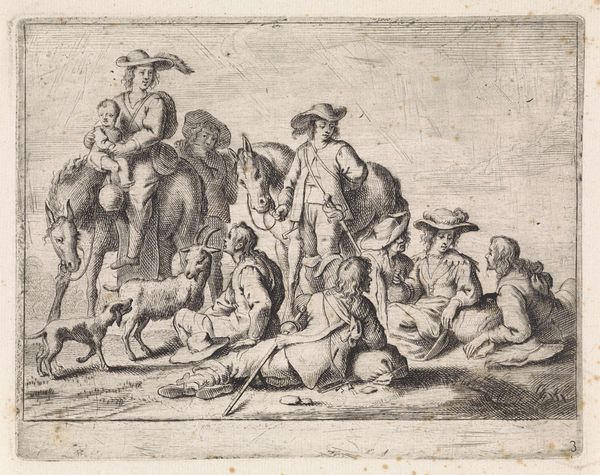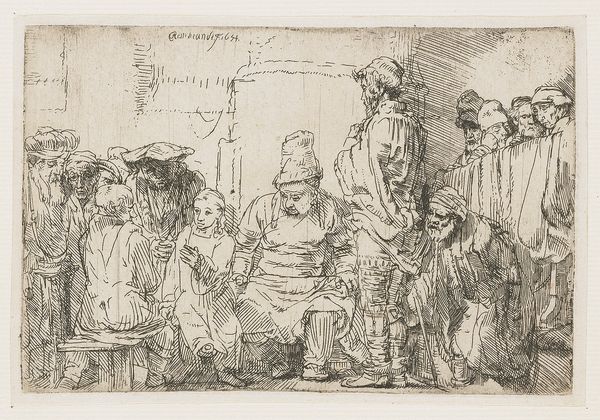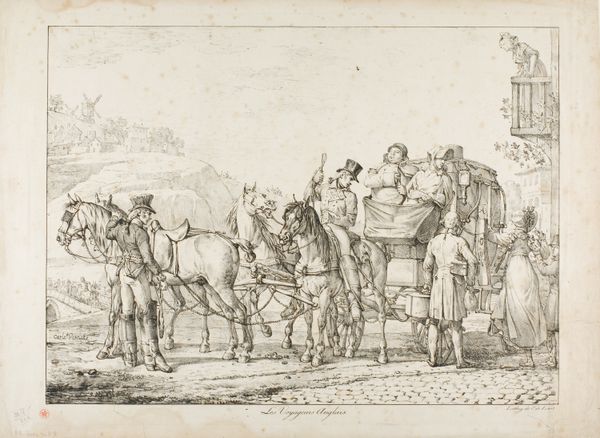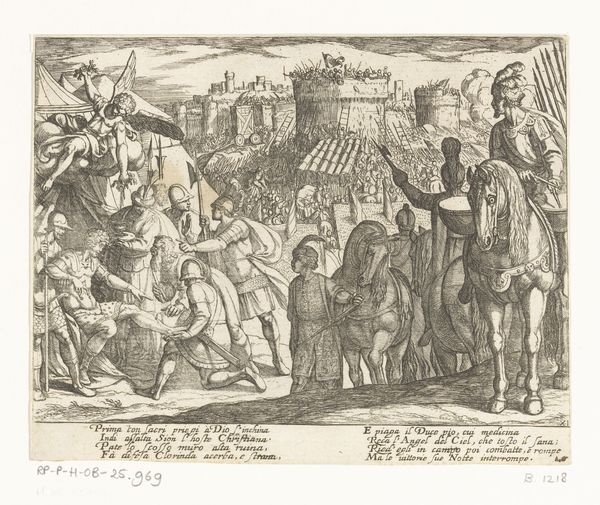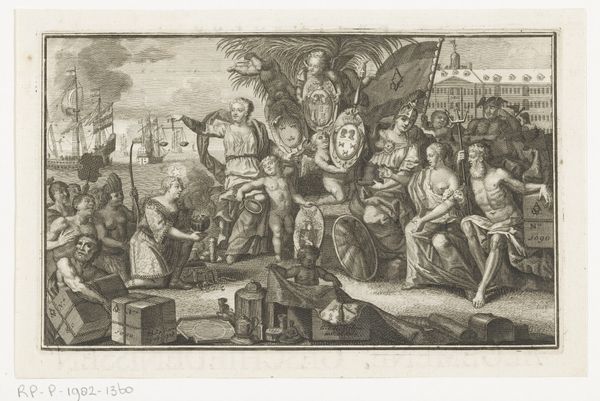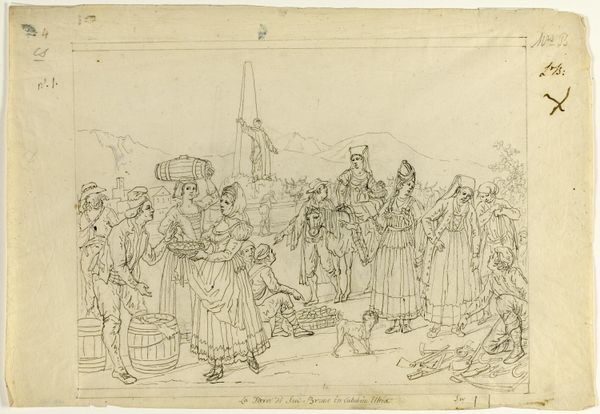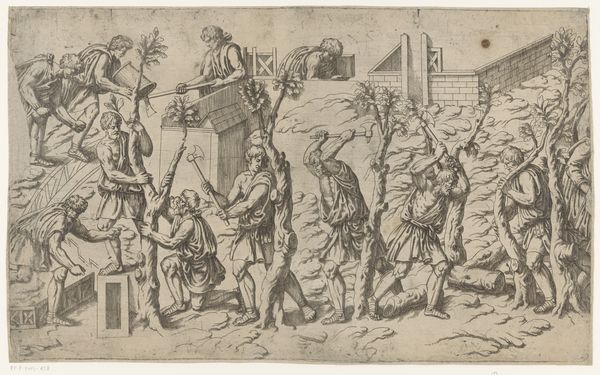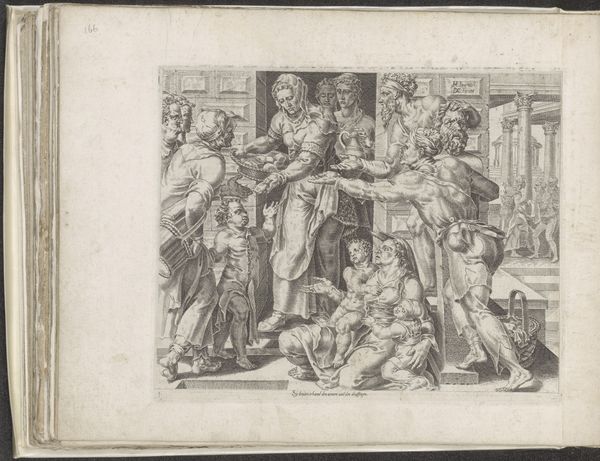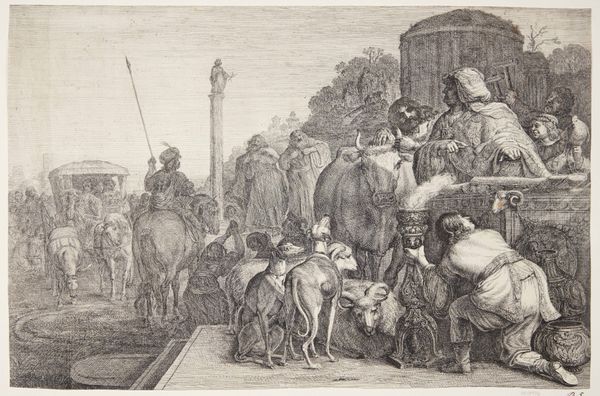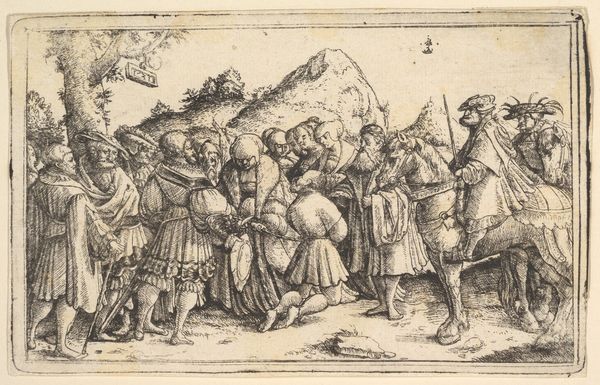
print, etching, engraving
#
narrative-art
# print
#
etching
#
figuration
#
history-painting
#
italian-renaissance
#
engraving
Dimensions: height 265 mm, width 452 mm
Copyright: Rijks Museum: Open Domain
Curator: Let’s discuss this intriguing print, "Scene uit de Dacische Oorlogen," made between 1537 and 1550 by Antonio Fantuzzi. The work uses etching and engraving to capture a historical scene. What's your immediate take on this composition? Editor: Immediately, the overwhelming sense is one of laborious procession. It's linear, crowded with figures, and detailed – almost claustrophobic – given the scale of an etching. I find myself drawn to the bestial symbolism within it: the procession includes diverse animals of great symbolic resonance in Greco-Roman cultures. Curator: Indeed. The structure is fascinating, isn't it? Notice how Fantuzzi arranges the figures—primarily in the foreground—almost like a frieze. This classical reference flattens the pictorial space, forcing our eye to scan the surface laterally, from one element to the next. The contrast between light and shadow, achieved through cross-hatching, articulates form but simultaneously emphasizes the surface of the print. Editor: Precisely. The strategic deployment of Greco-Roman iconography underscores a kind of cultural triumphalism. The inclusion of those particular animals, for instance – the ram and bull foremost – represent not just generic livestock, but are historically symbolic sacrificial figures central to legitimizing power throughout Roman imperial culture. This etching operates not just as an artifact but as an instrument, continuing to convey its patron's message across generations. Curator: From a formalist perspective, Fantuzzi's choice to present this historical narrative within the confines of printmaking profoundly impacts its reception. The use of line becomes paramount. Each stroke, meticulously placed, contributes to the overall texture and tonality, resulting in a tightly controlled and dense image that demands prolonged viewing. Editor: I think that the dense layering really exemplifies the idea of cultural memory being actively performed. This feels like more than just representing a past victory; it’s about continuing the echo of Roman imperial authority through symbolic animals. Curator: Ultimately, Fantuzzi uses a very specific visual rhetoric to represent power and cultural legacy through carefully structured forms and their historical context, to convey these ideas to audiences well after the depicted events. Editor: Yes, and by doing so, provides ongoing cultural echoes with deliberate symbolism within a carefully designed cultural landscape.
Comments
No comments
Be the first to comment and join the conversation on the ultimate creative platform.
